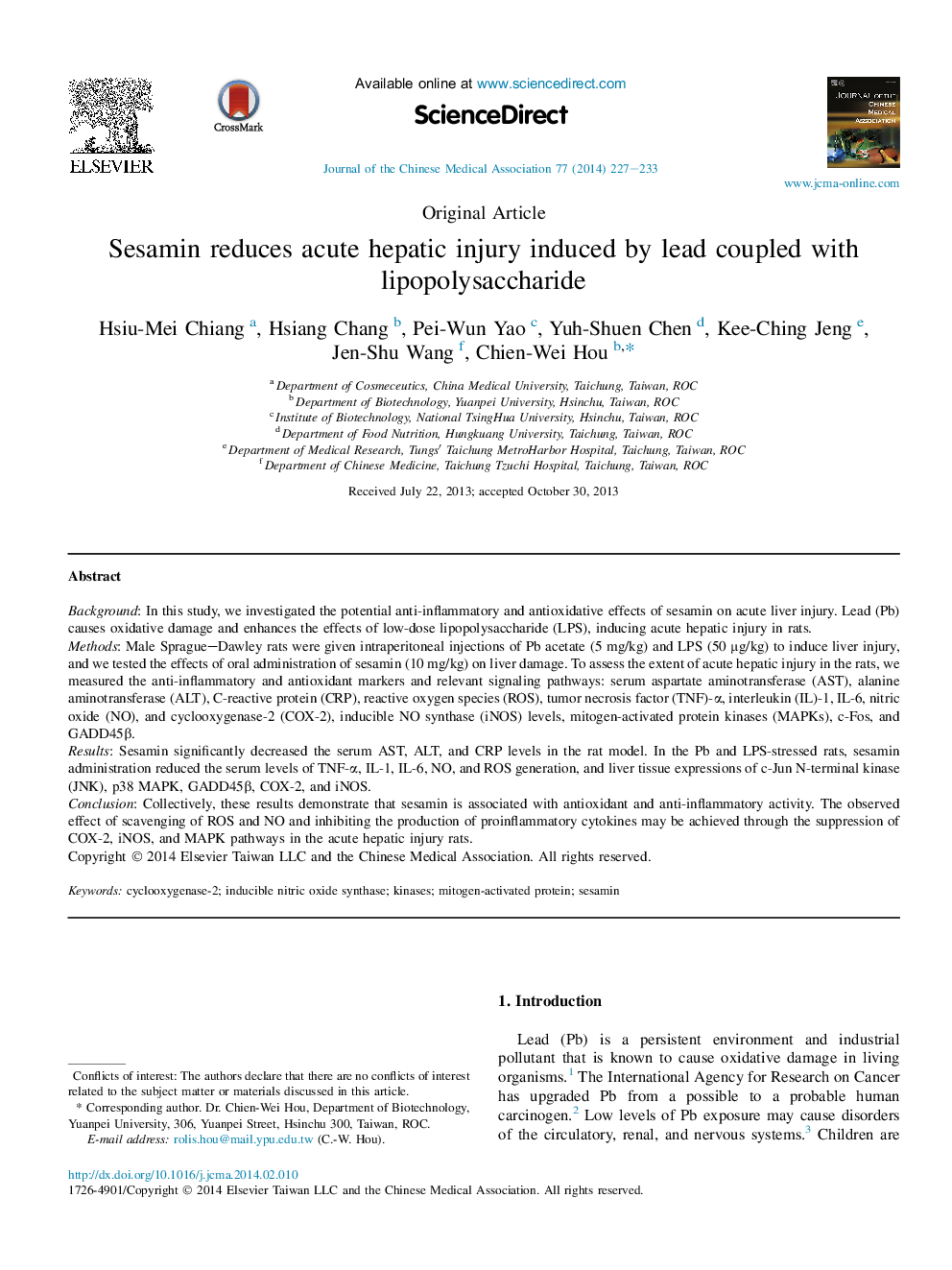| Article ID | Journal | Published Year | Pages | File Type |
|---|---|---|---|---|
| 3476374 | Journal of the Chinese Medical Association | 2014 | 7 Pages |
BackgroundIn this study, we investigated the potential anti-inflammatory and antioxidative effects of sesamin on acute liver injury. Lead (Pb) causes oxidative damage and enhances the effects of low-dose lipopolysaccharide (LPS), inducing acute hepatic injury in rats.MethodsMale Sprague–Dawley rats were given intraperitoneal injections of Pb acetate (5 mg/kg) and LPS (50 μg/kg) to induce liver injury, and we tested the effects of oral administration of sesamin (10 mg/kg) on liver damage. To assess the extent of acute hepatic injury in the rats, we measured the anti-inflammatory and antioxidant markers and relevant signaling pathways: serum aspartate aminotransferase (AST), alanine aminotransferase (ALT), C-reactive protein (CRP), reactive oxygen species (ROS), tumor necrosis factor (TNF)-α, interleukin (IL)-1, IL-6, nitric oxide (NO), and cyclooxygenase-2 (COX-2), inducible NO synthase (iNOS) levels, mitogen-activated protein kinases (MAPKs), c-Fos, and GADD45β.ResultsSesamin significantly decreased the serum AST, ALT, and CRP levels in the rat model. In the Pb and LPS-stressed rats, sesamin administration reduced the serum levels of TNF-α, IL-1, IL-6, NO, and ROS generation, and liver tissue expressions of c-Jun N-terminal kinase (JNK), p38 MAPK, GADD45β, COX-2, and iNOS.ConclusionCollectively, these results demonstrate that sesamin is associated with antioxidant and anti-inflammatory activity. The observed effect of scavenging of ROS and NO and inhibiting the production of proinflammatory cytokines may be achieved through the suppression of COX-2, iNOS, and MAPK pathways in the acute hepatic injury rats.
